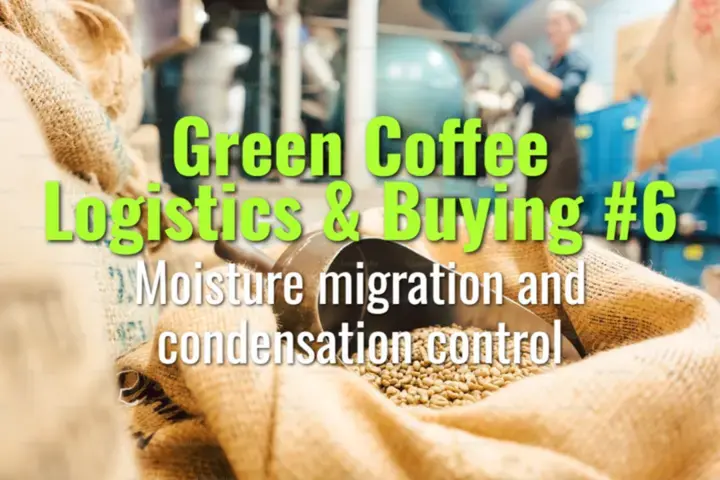Moisture migration and condensation control
This topic explains how moisture migration occurs inside coffee shipments, why condensation (“container rain”) is a risk, and the strategies used to protect green coffee quality during transport.
- Coffee Basics Nerds
- 2 min read
Article 6 of 12 in Green Coffee Logistics & Buying/

What is Moisture Migration?
- Coffee is hygroscopic—it absorbs and releases moisture depending on the environment.
- During sea transport, temperature changes between day and night cause moisture to move between air, container walls, and beans.
- This leads to condensation on container walls and ceilings, which can drip onto bags (“container rain”).
Risks of Moisture Migration
- Re-wetting of coffee bags.
- Mold growth and earthy/baggy flavors.
- Staining of jute bags and contamination with odors.
- Reduced shelf life and buyer rejections.
Factors That Increase Risk
- Shipping during humid/rainy seasons.
- Long transit times (4–8 weeks at sea).
- Containers without ventilation or liners.
- Coffee not stabilized (moisture >12% or uneven moisture distribution).
Condensation Control Strategies
1. Pre-Shipment Preparation
- Ensure beans dried and conditioned to 10–12% moisture, a-w 0.55–0.65.
- Use hermetic bags (GrainPro, Ecotact) inside jute for extra protection.
2. Container Preparation
- Inspect container for leaks, rust, or odors.
- Line container walls/floors with kraft paper or cardboard to absorb condensation.
- Use dunnage or pallets to keep bags off the floor.
3. Ventilation & Airflow
- Ventilated containers allow pressure equalization and reduce condensation.
- Stack bags with airflow gaps along container sides and ceiling.
4. Desiccants & Liners
- Install desiccant packs or strips to absorb excess humidity.
- Use container liners to reduce water vapor exchange.
Best Practices
- Pair moisture testing with proper packaging (jute + hermetic liners).
- Always document container preparation for buyer assurance.
- Rotate stock so shipments don’t wait too long in port storage.
Lasting Importance
Moisture migration and condensation control are critical for protecting coffee quality during long shipments. By preparing coffee properly, using liners, desiccants, and ventilated containers, exporters ensure that green coffee arrives clean, mold-free, and true to origin flavor even after weeks at sea.